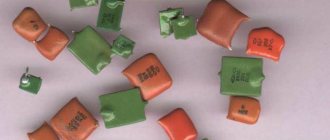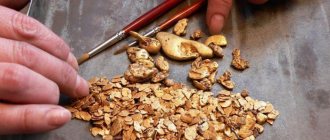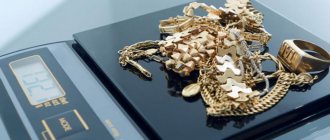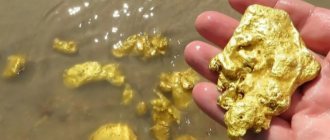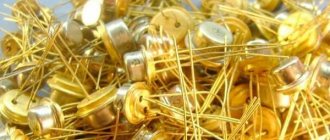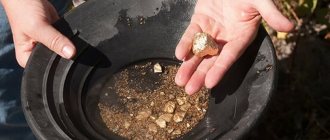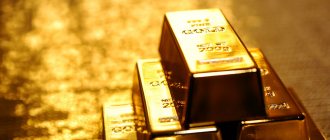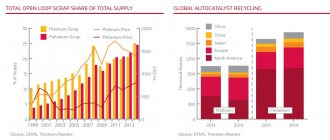Some hundred years ago, element 46 of the periodic table - palladium - did not have the same value as other rare metals.
Even in the 90s of the last century, when household refining of secondary precious metals was at the peak of popularity, palladium was of little interest to miners, unlike platinum, gold and silver.
The picture has changed dramatically now.
The metal belongs to the platinum group. Finds application in various industries. This is first of all:
- aerospace and military direction;
- automotive industry (production of catalysts for all types of transport);
- electronics;
- medicine.
Research is actively underway to expand the practical application of this element.
Thanks to this excitement, the price of palladium has increased significantly . Today, the cost of this element varies between 1 – 2 thousand rubles per 1 g. This fact, in turn, makes palladium refining an attractive undertaking from the point of view of economic benefits.
The metal is actively traded on world exchanges. It has a favorable prospect for long-term investment.
What radio components contain
Precious metals were used in the production of Soviet devices, since at that time the market was focused on high quality. Noble metals are resistant to adverse environmental conditions, do not wear out and do not oxidize. In which radio components gold, palladium and platinum can be found, you can guess by their importance in devices.
The more significant the part, the higher the likelihood that it contains precious components. Potentiometers or capacitors, switches, transistors, microcircuits, connectors, resistors, radio and generator tubes contain noble metals, which prolongs their service life.
Approximate percentage of palladium in radio components.
| Item name | Palladium percentage (%) |
| Spirals and windings of flux chords for markings KSP, KSU, KSD and potentiometers PTP-2 | 80 |
| KSP relay contacts, RES relays 7 and 8 | 78 |
| Capacitors PPML IM | 60 |
| Contacts from resistors SP5-14 22 Ohm and SP5-14 33 Ohm | 58 |
| Pins of the contact group of resistors SP5-17-10 Ohm, SP3-37 | 28 |
| Roller winding and contact group of resistors, PP3 from 40 to 47 | 20 |
| Contact areas, SP5 circles | 18 |
Which radio components contain the most Pd?
- Radio technical scrap of military electronic equipment.
- Palladium capacitors (usually green) marked KM.
- Metal core resistors.
- Oscilloscope wire types C114 - 125, C1-9-9.
- Switch contacts.
Most semiconductor devices contain platinum group metals, but in quantities that are insignificant for refining.
Where else can you find it?
Palladium can be extracted from computer parts. The same principle applies here - the older the unit, the greater the chance of getting a good metal yield.
Modern microcircuits contain a Pt-Pd alloy, but the yield of palladium from these parts will be insignificant. But it’s worth looking for pioneer chips.
Today, palladium is used as a catalyst in air purification systems from exhaust gases, and in the USSR it was used in gas mask filters of the DP-2 type
Where can I find the item?
This platinum group element can be found in complex radio engineering and electrical engineering in the form of sputtering of special conductors and contacts. This spraying is done in order to prevent oxidation and protect against sulfides.
In addition, the element can be found in:
- printed computer boards (mostly from Soviet times);
- various resistors (their metal core is often coated with palladium);
- individual parts of recorders;
- some potentiometers (they have a palladium shell);
- radio components SHIV-25;
- ceramic capacitors of the KM-3, 4, 5 and 6 series (often produced in the 80s);
- generators of the GC-164, GC-151, GC-122, GC-165 series;
- meters of the P2-73, E7-14, E7-15 series;
- resistors of the PPBP, PPZ-43, P-74 series.
Detecting pure palladium is quite difficult. It is used exclusively in jewelry, and very rarely. Most often, this precious metal is found in the form of an alloy with other metals, including in individual elements of radio engineering.
We recommend reading: The astrological nature of precious stones
Why separate metal?
Many chemists use palladium isolated from radio components as a catalyst. Jewelers refine this metal to repair palladium jewelry. Some craftsmen sell the mined precious metal to pawn shops, which falls under Article 19.14 of the Code of the Russian Federation on Administrative Offenses.
Many are attracted by the fact that the cost of Pd on the precious metals market today exceeds the cost of gold. According to experts, this year the price of this element will rise, as demand significantly exceeds supply.
Where is palladium mined?
The first place in metal mining belongs to. This holding produces 41% of all palladium raw materials in the world. The main deposits of the substance are located in the copper-nickel deposits of the Taimyr Peninsula in the Arctic and the Kola Peninsula.
Interesting! If hydrogen is placed in a palladium vessel and the container is sealed, then after heating the hydrogen will “flow out” through the walls, like water through a sieve.
South Africa is the second largest producer of platinum metal. This country provides up to 38% of world platinum production with its deposits.
The remaining share (21%) of world production is provided by palladium deposits:
- in Canada (9%);
- in North America (6%);
- in Zimbabwe (3%);
- Australia, Colombia and other countries.
How to distinguish palladium from platinum in radio components
Expert opinion
Vsevolod Kozlovsky
6 years in jewelry making. Knows everything about samples and can identify a fake in 12 seconds
Most platinoids have similar physicochemical characteristics. Among them is the special structure of the atomic lattice, which determines their pleasant, noble shine. Visually, Ag, Pt, Pd are very similar. Therefore, to distinguish them, you will need some reagents. It is most convenient to purchase special probes for qualitative reactions to these metals.
Knowledge of chemistry can help. Palladium, unlike platinum, reacts with concentrated nitric acid, and a drop of HNO3 will acquire a reddish tint.
Properties
All properties are usually divided into several groups. It's important to note that some minerals have similar characteristics, so it's worth familiarizing yourself with each category individually.
Physical
The mineral was first obtained in 1803 by a chemist from England, William Wollaston. The name of the asteroid Pallas was taken as a basis. It was also produced in laboratory conditions several years before palladium.
The metal has a metallic color with a silver tint. Visually, it can be easily confused with silver. Among the main physical properties, the following aspects are distinguished:
- Density 12 g/cm³.
- Melting degree 1554.
- Hardness 52 kgf/mm².
- Boiling point 2940.
- Elasticity 12600 kgf/mm².
Experts classify the mineral as one of the rarest metals. The total amount on Earth is no more than 0.000001%. The first structural changes occur at a temperature of 18–20 degrees.
To make expensive jewelry, elements from the same platinum group are often added to palladium. For example: with the additional use of rhodium or ruthenium, the strength of the metal increases.
Chemical
Distinctive characteristics of palladium: high inertness and galvanic resistance, which explains the peculiarity of the atomic structure. The metal does not react chemically with acid, alkali or water.
A stable state is observed under the influence of high temperatures in the range of 300–350 degrees. If the indicator increases above the set level, the oxidation process begins, which leads to the formation of an oxide film on the surface.
When heated to 800–850 degrees, substances decompose. In this range, resistance to the occurrence of an oxidative process appears.
Interesting fact: under the influence of a solution of nitric acid, the plate thins by 19 mm annually. When using an alloy of palladium and titanium, it is possible to reduce this figure to 0.1 mm.
When the temperature rises to 500 degrees, palladium begins to actively interact with other elements, for example, fluorine. The metal helps enhance titanium's anti-corrosion effect, as well as its resistance to other aggressive chemical elements.
Biological
Modern equipment makes it possible to continue biological research on palladium. Since the element has medicinal properties, it is often used in the medical industry. For example, small amounts may be required for the production of cytotoxic drugs.
Ways to isolate palladium from radio components
Palladium is the most chemically active element of all platinum group metals. There are several ways to obtain this metal:
- Electrolytic - using concentrated HCl.
- The etching method is to keep palladium scrap from other metals for a day in hydrochloric acid, then filter it.
- Refining.
Since it is by the method of refining, as a result of a sequential chain of chemical reactions, that pure Pd can be obtained, I will tell you in more detail about this method:
- Scrap palladium will likely contain several precious elements. Therefore, they will need to be identified in stages.
- All precious metals are dissolved in aqua regia - a mixture of concentrated nitric and hydrochloric acids in a ratio of 1:3. All radio components with potential palladium content are dipped into this solution. We remember about safety precautions - we protect our hands, eyes and respiratory organs.
- The dissolution process, depending on the amount of scrap, can last up to 2 days. The flask should be stirred periodically. If the solution turns burgundy, the presence of palladium is obvious.
- Next is the restoration of the substances we need. Pd can be reduced from solution with potassium iodide.
- To separate Palladium from Aurum, if it was part of the scrap, ammonia is added to the flask. Leave the liquid with dissolved metals for another 2 days.
- The next step is to filter the gold solution. Gold is reduced with zinc.
- And lastly: fill the palladium filtrate with a small amount of hydrochloric acid. We filter the resulting yellow-orange precipitate, wash it several times with water, then with alcohol, dry it, and as a result we obtain palladium powder, which can be melted using a gasoline or gas burner.
One of the options for refining palladium from radio components is shown in this video.
Refining of parts containing Pd
There are several ways to extract palladium from various radio components. There are two methods you can implement at home :
- electrolytic;
- chemical.
The first method is to use sulfuric acid as an electrolyte, cathode and anode , as well as a power supply.
The second method involves the use of a chemical reagent with the expressive name “Royal Vodka”.
It is a mixture of hydrochloric and nitric acid .
You can purchase it or make it yourself if you have the ingredients.
Both processes are unsafe, but to varying degrees.
In any case, it is necessary to have personal protective equipment:
- rubberized apron;
- gloves;
- respirator;
- glasses.
All work is carried out using a fume hood or outdoors . Detailed information on the extraction of palladium from radio components and other elements can be found in a separate article.
Palladium scrap prices
Scrap prices depend on many parameters - purity, quantity, sample availability, brand popularity. If it is a pure element obtained through refining, there is a chance to sell it for a good price. In radio components, palladium is usually 500 fine, and its cost rarely exceeds 500 rubles per gram.
Reception points can evaluate the product individually, especially if the markings have been preserved. And some parts, such as capacitors, can be purchased by collectors at a cost that is several times higher than the cost of palladium in them. Therefore, before attempting to melt down scrap yourself, consult with specialists.
How does mining happen?
The extraction process is divided into several stages:
- Extraction of ore containing palladium from deposits.
- Enrichment.
- Extraction of palladium in its pure form.
Industrial mining
The extraction of a rare and expensive element occurs in primary and secondary deposits. At primary sites (primary) platinum-containing ore is extracted. Placer (secondary) objects arise as a result of the destruction of primary deposits. Here palladium is extracted in its pure form without impurities.
It is customary to distinguish 2 types of deposits for development:
- Open (quarries).
- Closed (mines).
When using the open method, the development of a special soil quarry is used. To extract metal from the ground, specialized expensive equipment is used. Using vehicles, the ore is transported to locations for further processing.
It is worth noting that this metal is found in minute quantities in cosmic bodies.
To mine palladium using a closed method, special mines are created underground. Holes for explosives are drilled in a special layer. All that remains is to do the modification mechanically or manually.
Next, a conveyor belt is used to help transport the ore to the surface. Storage is carried out in open warehouses. Once sufficient mass has been accumulated, it is transported to the place where processing takes place.
Enrichment
It involves processing the resulting ore to obtain a high-quality, impurity-free concentrate that contains valuable metals. A ton of ore obtained contains only up to 6 grams of precious metals. To increase the concentration of palladium, the artificial principle of enriching ore with platinum minerals is used.
The ore is first crushed to a powder using special equipment. Water and special reagents (usually nitric acid) are added to the resulting product. Next, a high-pressure air stream is used.
Thanks to ionization, mineral molecules begin to be attracted to air bubbles. As a result, the bubbles float to the surface along with the precious particles, forming a foam-like mass, which is collected in a special container and then dried.
Once the mixture dries, a concentrate with a high platinum content appears. One ton contains up to 1 kg of metal without impurities. Further processing is carried out in an electric oven at a temperature of 1500 degrees. A slag mass is released from the by-products and must be removed.
The mass resulting from firing is sent to a converter furnace. It eliminates sulfur and iron. In 1 ton of ore, the output is up to 1.4 kg of pure metal without unnecessary impurities.
Affination
After processing in the converter furnace, the concentrates are sent to specialized refining plants. Modern equipment and the latest technologies help to isolate pure palladium from the resulting mass.
Affination is a production process that results in the separation of a pure substance from the total mass. An ingot or powdery mass is formed from the clean resulting mass to be sent for transportation to a storage location.
Excluding transportation time, the total production process averages 6 weeks.
Finding in nature and prey
Platinum and palladium are mined from primary and placer deposits. How are they different from each other? In primary deposits, the metal is part of minerals and is extracted as a by-product during the processing of nickel or copper ores. Placer deposits are permitted bedrock ore deposits where Pd has been released and accumulated as nuggets.
Palladium mining from alluvial deposits accounts for about 2% of the global production of the element. The largest of them are located in the Ural and Far Eastern regions of Russia, Canada, the USA, Australia and Colombia. The remaining 98% of Pd is extracted from the bowels of the earth at primary deposits of copper-nickel, platinum and chromium ores.
The world leaders in the extraction of precious metals from such deposits are Russia and South Africa. The undisputed first place among the mining enterprises of the industry is occupied by MMC Norilsk Nickel, producing more than 40% of the world's Pd volumes. The metallurgical plant extracts metal as a by-product during the extraction of its main products - copper and nickel. Among the mining assets of Norilsk Nickel, which have the potential for palladium reserves, are deposits on the Taimyr Peninsula - Talnakhskoye, Oktyabrskoye and Norilsk-1, as well as on the territory of the Kola Peninsula.
The next most important source of metal in the world is usually called the Bushveld complex, located on the territory of the Republic of South Africa. The territory of the deposit has the largest reserves of platinum group metals in the world.
Pd in nuggets has impurities of other precious metals, but it itself is often one of the elements of native gold or platinum. During palladium mining in Norilsk, geologists discovered palladium platinum - a compound of platinum and its “younger brother” in a ratio of 60%/40%. Another similar alliance, this time with gold, was found in Brazil. Such gold with a 10% Pd content is called porpecite: visually distinguishing it from pure yellow metal is also problematic.
What minerals contains palladium? You can see them in the sample photos. The most famous minerals containing Pd are palladite, stannopalladite, braggite and potarite. Some compounds even today do not have names, since they have been little studied due to their rarity.
The element Pd is a component not only of the interior of our planet, but also of space objects: palladium is found in iron and stone meteorites arriving on Earth.
